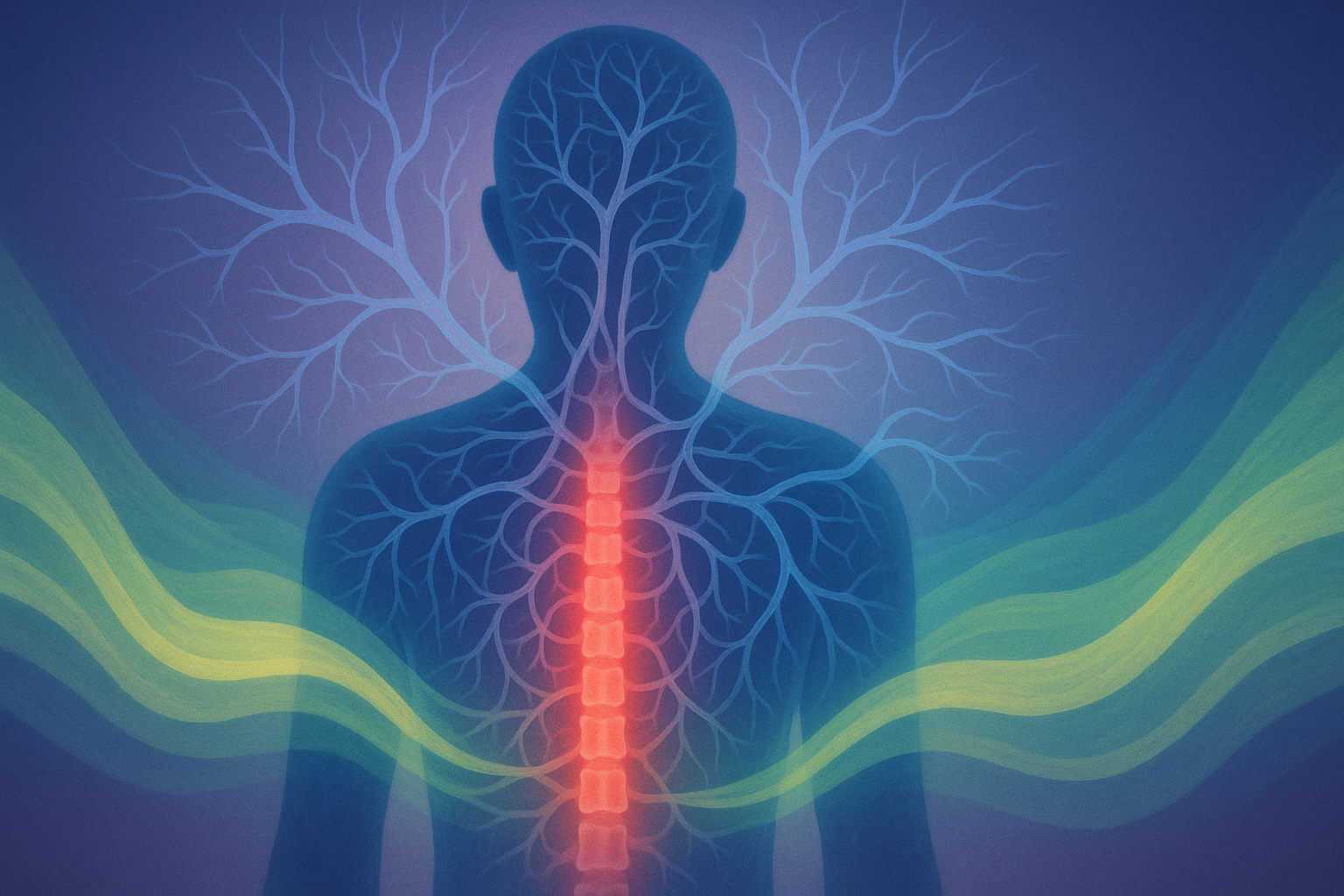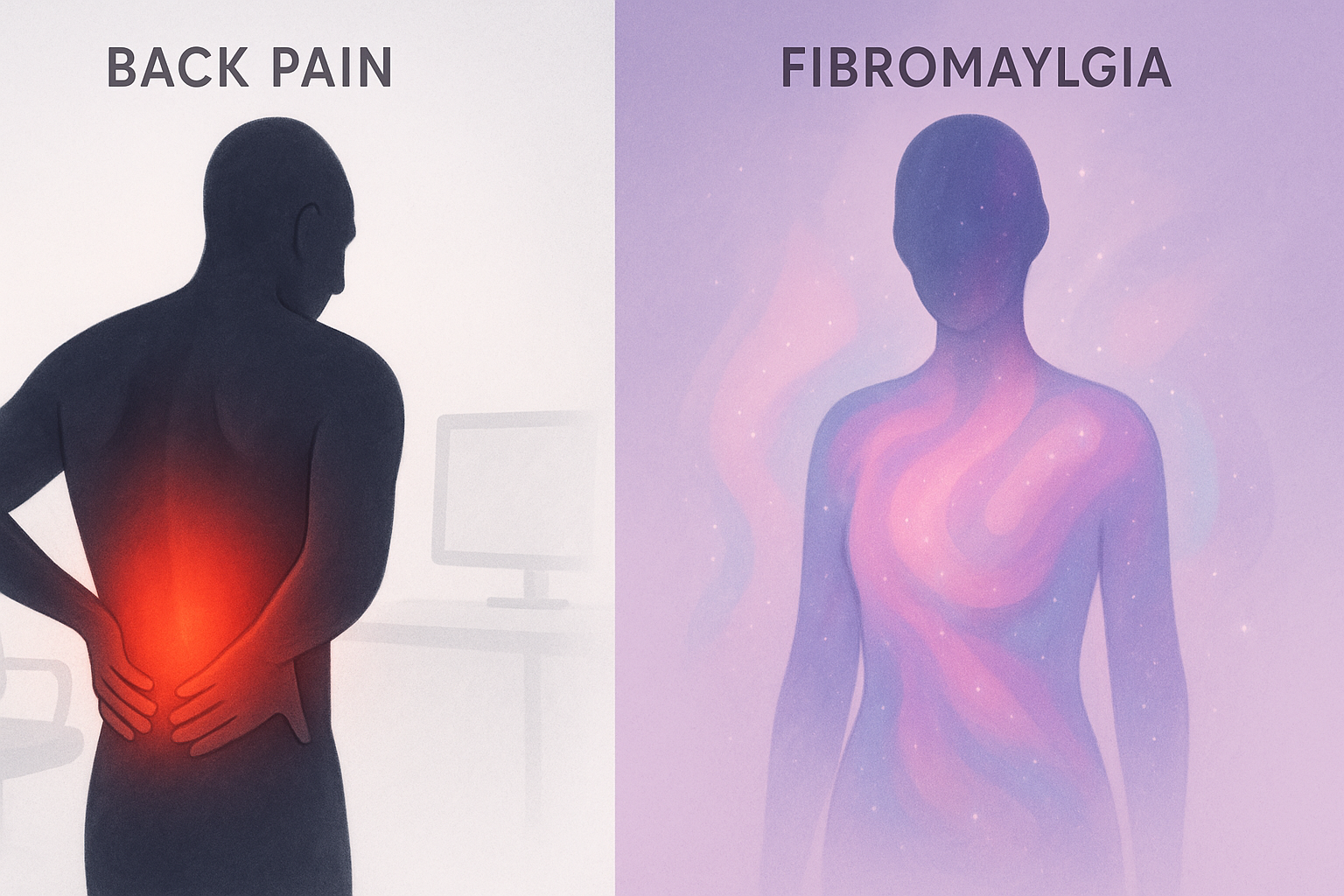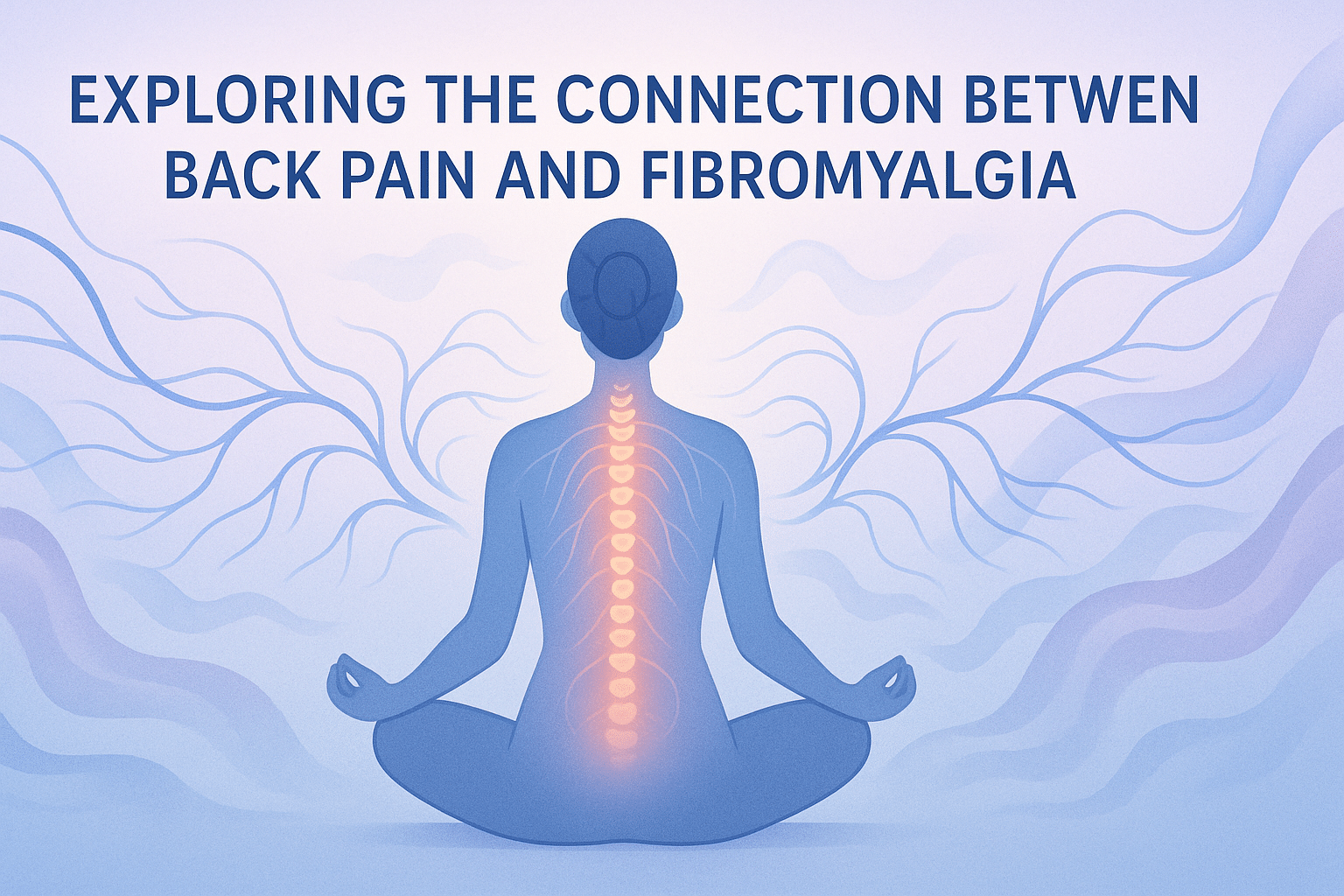Exploring the Connection Between Back Pain and Fibromyalgia
Back pain and fibromyalgia are conditions that affect millions of people worldwide, often intertwining in complex and challenging ways. Understanding the link between these conditions can help sufferers find effective relief and improve their quality of life. In this blog post, we will delve into the connection between back pain and fibromyalgia, explore their symptoms, and discuss potential treatments. 🧠💪
Table of Contents
1. Introduction to Back Pain and Fibromyalgia
2. Understanding Fibromyalgia
3. The Overlap: How Back Pain and Fibromyalgia are Connected
4. Diagnosing the Dual Condition
5. Treatment Options
6. Lifestyle Adjustments for Managing Symptoms
7. Conclusion
8. FAQs

Introduction to Back Pain and Fibromyalgia
It’s no secret that back pain is one of the most common complaints in medical offices. Whether it’s from poor posture, injury, or an underlying condition, back pain can significantly disrupt daily life. Fibromyalgia, on the other hand, is a more mysterious condition, characterized by widespread musculoskeletal pain, fatigue, and tenderness in localized areas.
When these two conditions intersect, the results can be debilitating. Many individuals with fibromyalgia report chronic back pain as a symptom, but what exactly is the connection between the two?
Understanding Fibromyalgia
Fibromyalgia is a chronic disorder known for causing pain, stiffness, and tenderness of the muscles, tendons, and joints. The exact cause of fibromyalgia is still unknown, but researchers believe it involves a combination of genetic, environmental, and psychological factors. Stress, trauma, and infections may trigger or exacerbate symptoms.

People with fibromyalgia often experience a heightened sensitivity to pain due to abnormal processing of pain signals in the brain. This can lead to persistent pain in various parts of the body, including the back.
The Overlap: How Back Pain and Fibromyalgia are Connected
Back pain in fibromyalgia patients can be attributed to several factors:
1. Central Sensitization: Fibromyalgia can cause central sensitization, where the central nervous system becomes oversensitive to pain stimuli. This makes the back, a common area of tension and stress, particularly susceptible to pain.
2. Muscle Tension and Spasms: Chronic pain can lead to muscle tension, which can cause or worsen back pain. Fibromyalgia sufferers often experience muscle spasms and tightness in their back.
3. Trigger Points: These are specific areas in the muscles that are extremely sensitive to pressure. In fibromyalgia, trigger points in the back can cause significant discomfort.
Diagnosing the Dual Condition
Diagnosing fibromyalgia and back pain together can be challenging. It requires a thorough examination by a healthcare professional, often involving:
1. Medical History: A detailed history helps in understanding the onset and pattern of symptoms.
2. Physical Exam: A physical examination can reveal tender points associated with fibromyalgia and areas of tension in the back.
3. Diagnostic Tests: While there are no specific tests for fibromyalgia, other conditions that cause back pain must be ruled out, such as arthritis or herniated discs.
Treatment Options
Treating back pain in fibromyalgia involves a multi-faceted approach:
1. Medications: Over-the-counter pain relievers, antidepressants, and anti-seizure drugs can be prescribed to manage pain and symptoms.
2. Physical Therapy: Gentle exercises and physical therapy can improve flexibility and reduce pain.
3. Cognitive Behavioral Therapy (CBT): CBT can help patients cope with chronic pain by changing negative thought patterns.
Lifestyle Adjustments for Managing Symptoms
In addition to medical treatments, lifestyle changes play a crucial role in managing symptoms:
1. Regular Exercise: Low-impact exercises, such as swimming or walking, can improve pain and function.
2. Stress Management: Techniques like yoga, meditation, and deep breathing can reduce stress and pain levels.
3. Sleep Hygiene: Ensuring adequate and quality sleep is vital. Establishing a regular sleep schedule can help.
Conclusion
Understanding the connection between back pain and fibromyalgia is crucial for finding effective management strategies. While these conditions can be challenging, a combination of medical treatment, physical therapy, and lifestyle changes can significantly alleviate symptoms and improve quality of life. Remember, you’re not alone on this journey, and there’s always hope for a brighter, pain-free future. 🌟
FAQs
Q: Can fibromyalgia cause back pain?
A: Yes, back pain is a common symptom of fibromyalgia due to muscle tension, spasms, and trigger points.
Q: Are there any specific tests for fibromyalgia?
A: There are no specific tests for fibromyalgia; diagnosis is made based on symptoms and by ruling out other conditions.
Q: What lifestyle changes can help manage fibromyalgia symptoms?
A: Regular exercise, stress management, and maintaining good sleep hygiene can help manage symptoms effectively.
